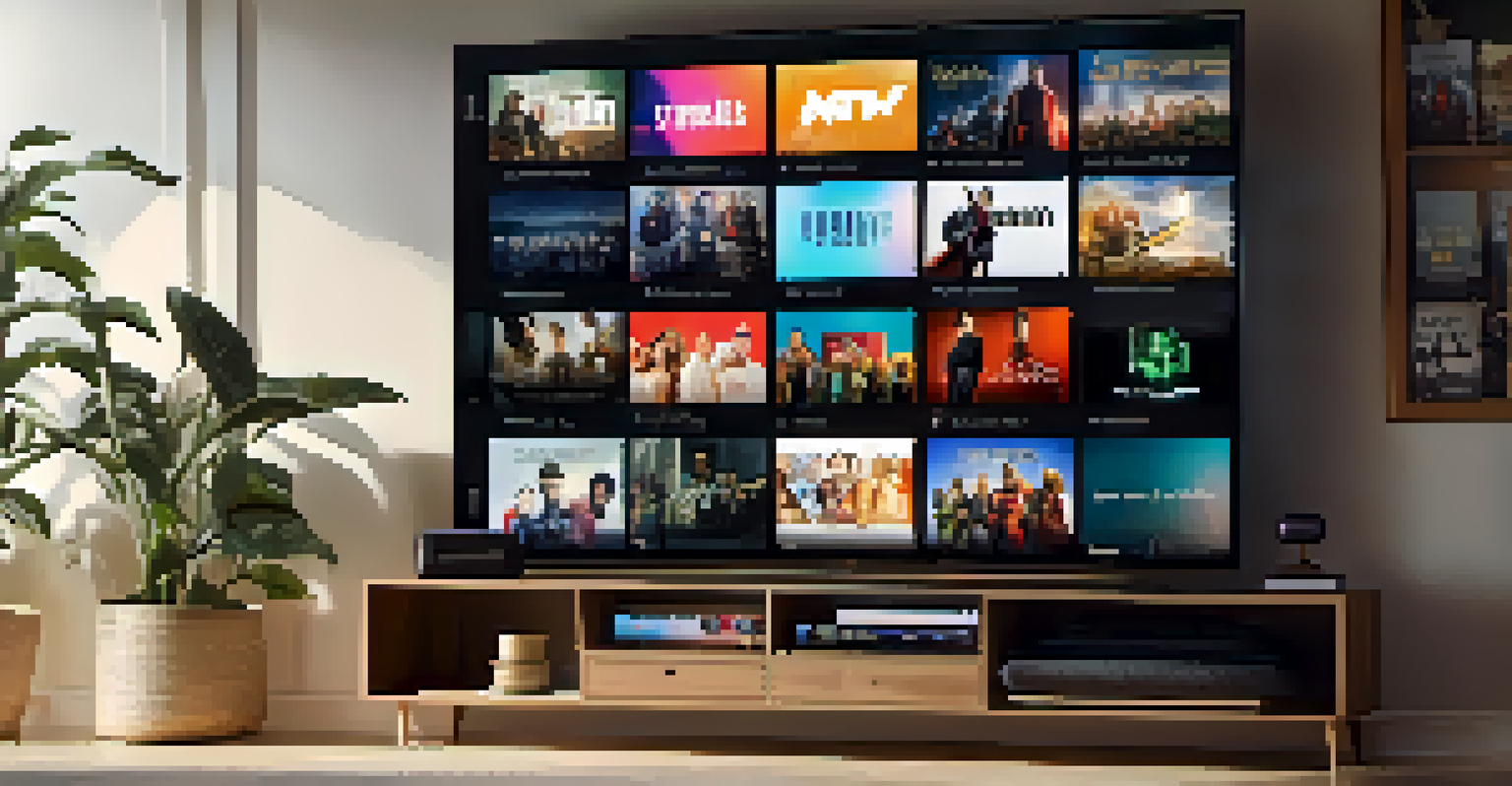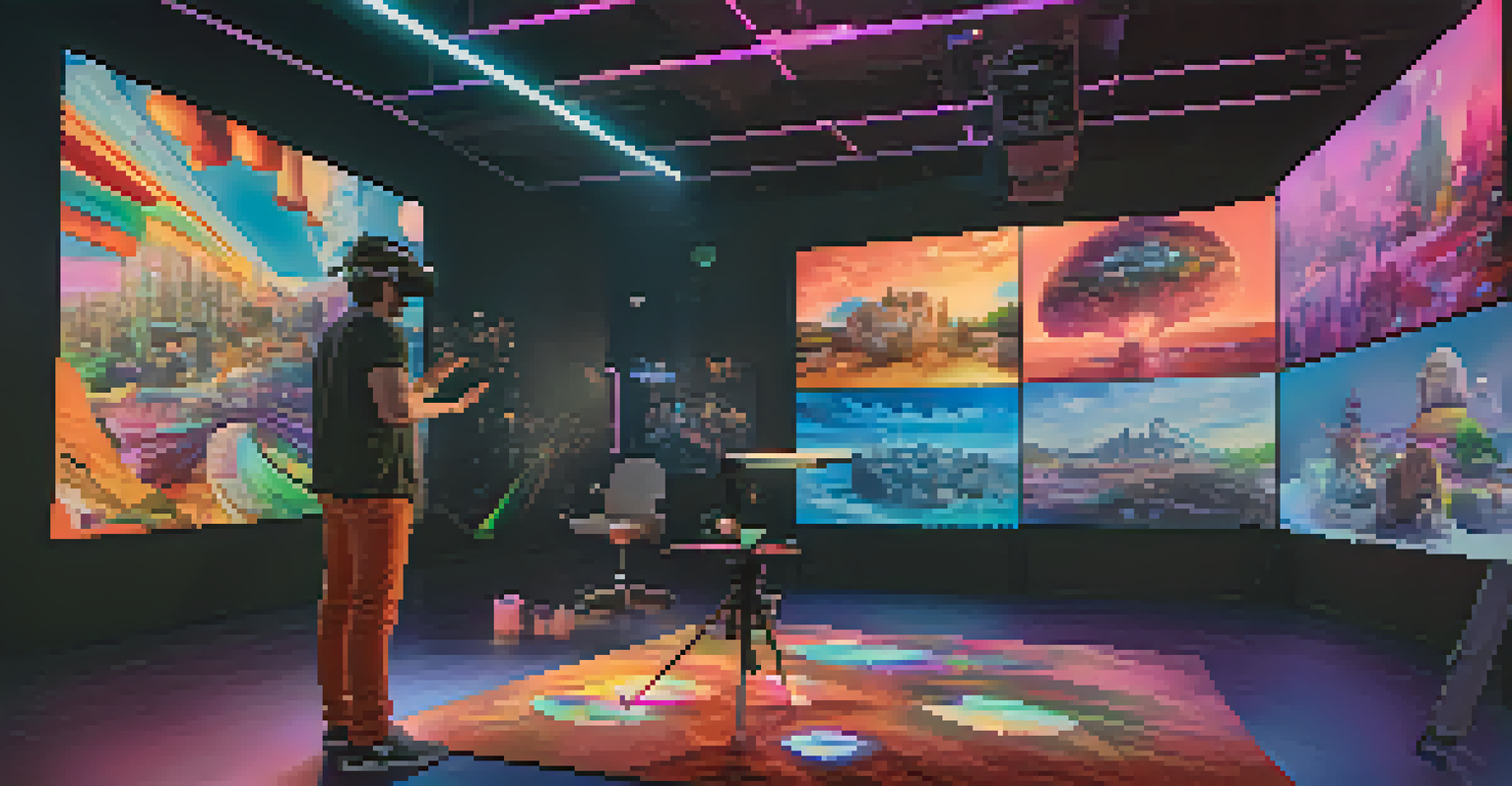Digital Media's Impact on Hollywood: The New Era of Filmmaking

The Shift from Traditional to Digital Filmmaking
In recent years, Hollywood has witnessed a remarkable shift from traditional filmmaking methods to digital platforms. This change has not only influenced how films are made but also how they are distributed and consumed. With advancements in technology, filmmakers can now achieve stunning visual effects and high-quality production on tighter budgets, making filmmaking more accessible than ever.
The future of storytelling lies in the hands of those who dare to innovate and explore new technologies.
Digital media allows for faster editing processes and easier collaboration among creative teams, often spread out across different locations. Filmmakers can now share their work-in-progress instantly with producers, editors, and even audiences, creating a more dynamic feedback loop. This immediacy can lead to more efficient decision-making and a more refined final product.
Moreover, the rise of digital cameras and editing software has empowered aspiring filmmakers to create content without the daunting overhead costs of traditional studios. As a result, a diverse range of voices and stories are emerging from independent creators, enriching the cinematic landscape with unique perspectives.
Streaming Services Revolutionizing Film Distribution
The emergence of streaming services like Netflix, Hulu, and Amazon Prime has transformed the way films reach audiences. No longer confined to theatrical releases, films can now premiere on these platforms, often bypassing traditional distribution channels altogether. This has democratized access to films, allowing viewers from all backgrounds to discover a wider array of content.

As streaming services invest heavily in original content, they have become major players in the filmmaking industry. This competition drives creativity, encouraging filmmakers to explore innovative narratives and genres that may not have found a place in conventional cinema. For example, the success of international films on these platforms has opened doors for diverse storytelling from around the globe.
Digital Filmmaking Redefines Access
The shift to digital filmmaking has made the production process more accessible, enabling a diverse range of voices and stories to emerge.
Additionally, streaming services use data analytics to understand viewer preferences, helping them tailor content to meet audience demand. This insight allows filmmakers to create films that resonate more deeply with their target demographics, ultimately leading to greater viewer engagement and satisfaction.
Social Media's Role in Film Promotion and Engagement
Social media has become an essential tool for filmmakers to promote their projects and engage with audiences. Platforms like Instagram, Twitter, and TikTok provide creative avenues for marketing films, allowing filmmakers to build buzz long before a movie hits the screen. By sharing behind-the-scenes content, trailers, and interactive posts, they can create a sense of community and anticipation among fans.
In this digital age, every filmmaker has the opportunity to tell their story, regardless of budget or background.
Moreover, social media enables filmmakers to connect directly with their audience, receiving immediate feedback and fostering a two-way conversation. This engagement can lead to a more invested fan base and enhance the overall viewing experience. For instance, film campaigns that invite fan participation—like contests or sneak-peek previews—can generate excitement and loyalty.
Additionally, influencers and content creators play a significant role in film promotion. Their reach and credibility can help amplify a film's message, attracting new audiences who might not have otherwise considered watching it. This shift in marketing strategy highlights the importance of adapting to digital trends to stay relevant in the ever-evolving entertainment landscape.
The Rise of User-Generated Content and Filmmaking
User-generated content (UGC) has emerged as a powerful force in the film industry, allowing everyday individuals to contribute to storytelling in unique ways. Platforms like YouTube and TikTok empower users to create and share their own films, often with minimal resources. This grassroots creativity not only democratizes filmmaking but also challenges traditional storytelling norms.
The impact of UGC extends beyond just individual creators; it fosters a culture of collaboration and inspiration among filmmakers. Many established directors and studios now look to social media platforms for talent scouting, discovering fresh voices that resonate with younger audiences. This symbiotic relationship enriches the film industry, blending professional and amateur creativity.
Streaming Platforms Transform Distribution
Streaming services have revolutionized film distribution, allowing for wider access and encouraging innovative storytelling.
Additionally, UGC can serve as a testing ground for new ideas, giving filmmakers insights into emerging trends and viewer preferences. By observing what resonates with audiences on these platforms, filmmakers can tailor their projects to align with audience interests, ensuring their stories remain relevant and engaging.
Virtual Reality and Augmented Reality in Filmmaking
Virtual reality (VR) and augmented reality (AR) are pushing the boundaries of traditional filmmaking into immersive experiences. Filmmakers are now experimenting with these technologies to create narratives that allow viewers to step inside the story. Imagine watching a film where you can explore the environment, interact with characters, or even influence the plot—this is the future of storytelling.
These technologies not only enhance viewer engagement but also offer new creative opportunities for filmmakers. VR experiences can transport audiences to fantastical worlds, while AR can blend the real world with fictional elements, enriching the storytelling experience. This innovative approach encourages filmmakers to think outside the box and explore narratives in ways that traditional media cannot.
However, the integration of VR and AR in filmmaking comes with its challenges, including technical limitations and the need for specialized skills. As the industry continues to evolve, training and resources will play a crucial role in helping filmmakers harness these technologies effectively, shaping the next generation of storytelling.
The Impact of Digital Media on Film Production Costs
Digital media has significantly altered the cost structure of film production. With advancements in technology, filmmakers can utilize high-quality digital cameras and editing software that are often more affordable than traditional film equipment. This shift allows independent filmmakers to produce professional-grade films without breaking the bank, fostering a more diverse array of stories and voices in Hollywood.
Moreover, the ease of digital production means that filmmakers can experiment with less financial risk. This flexibility encourages innovation, as creators can test new ideas and formats without the pressure of massive budgets. For instance, the success of micro-budget films has inspired many to explore unconventional narratives that resonate with niche audiences.
Social Media Enhances Engagement
Social media provides filmmakers with tools to promote their work and engage directly with audiences, fostering community and loyalty.
However, while production costs may decrease, the need for skilled professionals remains crucial. As technology continues to evolve, filmmakers must stay updated on the latest tools and techniques to ensure they deliver high-quality content. This balance between affordability and expertise is key to navigating the new landscape of filmmaking.
The Future of Filmmaking in the Digital Age
Looking ahead, the future of filmmaking in the digital age is filled with exciting possibilities and challenges. As technology continues to advance, filmmakers will need to adapt to new tools, platforms, and audience preferences. This evolution will likely lead to even more diverse storytelling and innovative cinematic experiences that push the boundaries of imagination.
Moreover, the blending of digital and traditional filmmaking techniques will create opportunities for collaboration across different mediums. Filmmakers may draw inspiration from video games, animation, and even live performances, merging these elements to create unique narratives that captivate audiences. This cross-pollination of ideas is vital for keeping the industry fresh and relevant.

Ultimately, the key to success in this new era will be embracing change while staying true to the art of storytelling. As digital media continues to reshape Hollywood, filmmakers who are willing to experiment, learn, and connect with their audiences will thrive, ushering in a new wave of creativity in the film industry.